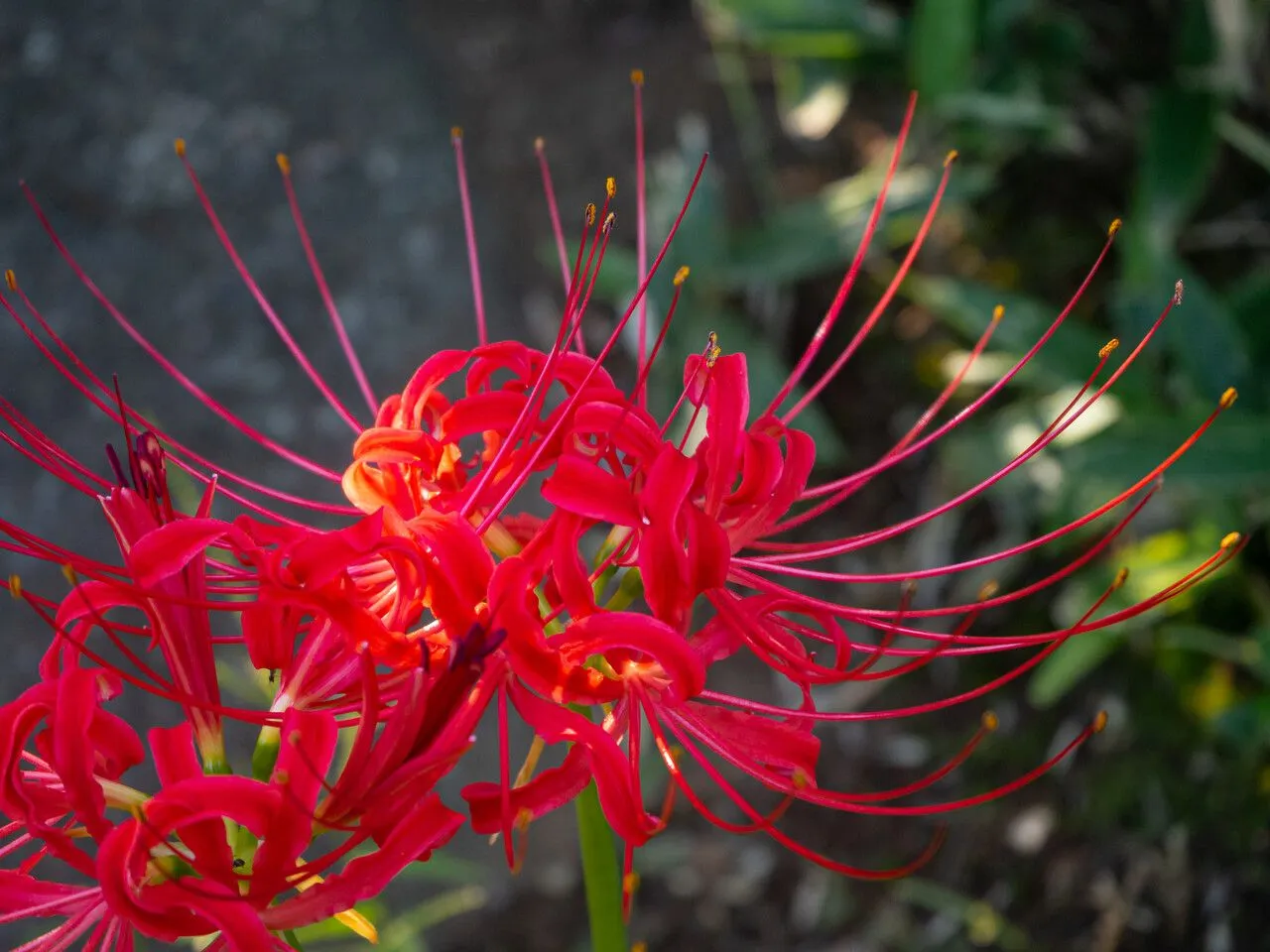
Author: (L’Hér.) Herb.
Bibliography: Bot. Mag. 47: t. 2113, p. 5 (1819)
Year: 1819
Status: accepted
Rank: species
Genus: Lycoris
Vegetable: Unknown
Observations: Nepal to C. & S. Japan
The Red Spider Lily, scientifically known as Lycoris radiata, is a captivating flowering plant belonging to the Amaryllidaceae family. Esteemed for its striking appearance, this perennial herb has secured a special place in both horticulture and folklore across various regions. The plant was first extensively documented in the renowned Botanical Magazine in the year 1819, shedding light on its botanical characteristics and unique beauty.
Native to a diverse range of habitats, the Red Spider Lily is predominantly found between Nepal and Central and Southern Japan. This geographic spread underscores the adaptability of the species to varied climatic conditions, from the cool, moist environments of Nepal to the temperate regions of Japan.
The Red Spider Lily is particularly noted for its vivid red flowers, which seem to appear like delicate arachnid legs, giving the plant its common name. These flowers bloom on leafless stems, usually in the late summer or early fall, creating a dramatic floral display that often catches the eye of gardeners and plant enthusiasts. Its flowers can evoke a sense of mystery and allure, which is perhaps why they are often associated with tales of the otherworldly in various cultures.
In horticultural practices, the Red Spider Lily is prized not only for its ornamental value but also for its ease of cultivation. It thrives in well-drained soils and can tolerate a range of sunlight exposures, from full sun to partial shade. Once established, it requires minimal maintenance, making it an attractive choice for amateur and experienced gardeners alike. Moreover, its resilience to pests and diseases further adds to its popularity.
Culturally, the Red Spider Lily holds significant symbolic meanings, often associated with death and reincarnation in Japanese culture. This is partly due to its blooming period, which coincides with the autumnal equinox and the time for honoring deceased ancestors. Legends narrate that the flowers bloom along the paths to the afterlife, guiding souls with their fiery red glow.
Despite its beauty, it’s worth noting that all parts of the Red Spider Lily are toxic if ingested. This toxicity serves as a natural deterrent, protecting the plant from herbivores.
In conclusion, the Red Spider Lily, or Lycoris radiata, is a plant of exceptional aesthetic and cultural importance. Its breathtaking blooms, ease of care, and deep-rooted symbolism make it a fascinating subject for both botanical study and cultural storytelling. The comprehensive documentation by early botanists stands as a testament to the enduring allure of this red-hued marvel.
Eng: red spider lily, red spider-lily, spider-lily
Deu: rosarote spinnenlilie
En: Red spider lily, Red spider-lily, Spider-lily
Ar: زنبق العنكبوت الأحمر
Zh: 石蒜
Cs: Lykoris
De: Rosarote Spinnenlilie
Id: Bakung lelabah merah
Ko: 석산
Ms: Bakung labah labah merah
Fa: سوسن عنکبوتی قرمز
Ru: Ликорис лучистый
Es: Žarkasti likoris
Sv: Röd tempellilja
Zh-tw: 石蒜, 紅花石蒜
Zh-hant: 石蒜
Tr: Ekinoks Çiçeği
Uk: Лікоріс променистий
Za: Gohofangz
© copyright of the Board of Trustees of the Royal Botanic Gardens, Kew.
© copyright of the Board of Trustees of the Royal Botanic Gardens, Kew.
© copyright of the Board of Trustees of the Royal Botanic Gardens, Kew.
Taken Sep 8, 2021 by ??? 囧 (cc-by-sa)
Taken Oct 4, 2020 by 郁子 日野 (cc-by-sa)
Taken Sep 27, 2020 by 邦生 水谷 (cc-by-sa)
Taken Sep 8, 2021 by ??? 囧 (cc-by-sa)
Taken Dec 7, 2020 by Emmanuelle Richard (cc-by-sa)
Taken Sep 21, 2019 by huy HO (cc-by-sa)
Taken Sep 23, 2021 by Eli Small (cc-by-sa)
Taken Sep 20, 2020 by Chris Griggs (cc-by-sa)
Taken Oct 29, 2020 by Chris Griggs (cc-by-sa)
Taken Sep 23, 2019 by Eli Small (cc-by-sa)
Taken Sep 23, 2021 by Eli Small (cc-by-sa)
Taken Sep 23, 2019 by Eli Small (cc-by-sa)
Taken Sep 14, 2021 by Sameer Naz zargar (cc-by-sa)
Taken Sep 12, 2021 by Ryan Bitely (cc-by-sa)
Taken Nov 1, 2022 by Henry Kuecken (cc-by-sa)
Taken Oct 2, 2021 by Jennifer Peery (cc-by-sa)
Taken Sep 19, 2022 by Ranko Bogosavac (cc-by-sa)
Taken Aug 23, 2020 by Gene Anderson (cc-by-sa)
Taken Sep 15, 2020 by Denise Houchins (cc-by-sa)
Family: Myrtaceae Author: (F.Muell.) K.D.Hill & L.A.S.Johnson Bibliography: Telopea 6: 402 (1995) Year: 1995 Status:…
Family: Rubiaceae Author: Pierre ex A.Froehner Bibliography: Notizbl. Bot. Gart. Berlin-Dahlem 1: 237 (1897) Year:…
Family: Sapindaceae Author: Koidz. Bibliography: J. Coll. Sci. Imp. Univ. Tokyo 32(1): 38 (1911) Year:…
Family: Asteraceae Author: A.Gray Bibliography: Pacif. Railr. Rep.: 107 (1857) Year: 1857 Status: accepted Rank:…
Family: Fabaceae Author: Medik. Bibliography: Vorles. Churpfälz. Phys.-Ökon. Ges. 2: 398 (1787) Year: 1787 Status:…
Family: Aspleniaceae Author: (Cav.) Alston Bibliography: Bull. Misc. Inform. Kew 1932: 309 (1932) Year: 1932…